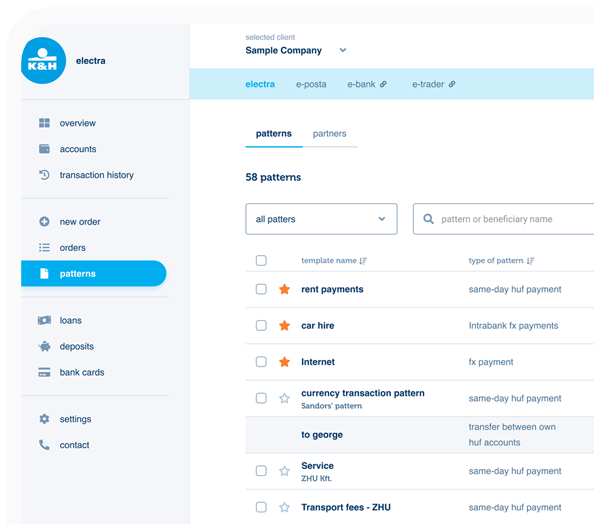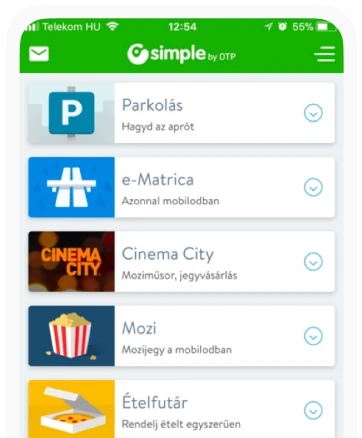Why is it important for airports to focus on passenger experience?
According to a survey called Global air traffic – scheduled passengers 2004-2021, the number of scheduled passengers boarded by the global airline industry in 2019 exceeded 4,54 billion people. This number increases by 4-5% year on year, which brings with it the maximum utilization of the capacity of services provided at airports. The projected number of airport passengers for 2020 will decrease significantly due to the pandemic, which will also affect airport services and thus passenger experience.
In the aviation sector a 20-year-long development cycle is not unheard of. Managing infrastructure changes at airports is a complex task, their visibility is very limited. How could airports still make the airport experience easier and better with minor changes but without major investments that are already affecting the present?
Time is the most important factor
People don’t like waiting. Based on the Global Passenger Survey conducted by IATA, shortening waiting times is a top priority for passengers. 80% of passengers do not want to wait more than 3 minutes at the baggage drop and more than ten minutes at baggage reclaim. 74% of passengers said the main advantage of automatic boarding gates are less waiting and queuing. Speed is a cornerstone of a seamless flight experience, which has become a major goal for passenger traffic management. The term “seamless travel” is often used to describe the entire travel process, which is free of delay and confusion.
Simplifying the travel process is key
Airport service planning can harmonize the needs of passengers and the business side. The travel process begins with future passengers searching for flights and ends with them leaving the airport at their destinations. You can read about digital solutions used in the process in our previous article. During the planning process, the airport passenger flow is broken down into so-called critical points of contact where passengers physically encounter airport services. These critical points of contact within the airport passenger flow are crucial to be correctly identified since time can be saved at these junctions.
At the forefront of simplifying the travel process, is a joint Canadian-Dutch program (Known Traveler Digital Identity) that will allow passengers flying between the two countries to enjoy smooth travel. A simple facial scan is sufficient to identify passengers when boarding and entering the aircraft. Passengers do not have to present their travel documents and do not have to undergo further checks.
In collaboration with several airports, Munich Airport has created an application called “Passngr“, which is a digital travel assistant. This application provides travel useful information throughout the journey – on the traffic conditions leading to the airport, at the airport of departure, at the airport of destination and upon arrival at the final destination.

Schipol Airport offers passengers with short connection time the opportunity to get past the security and passport control lines faster. New self-service units have been installed in 2 wings where Travelers can scan their boarding pass and if they have a short transfer time, the self-service unit will print out their so-called Short Connection Pass.
Passengers are constantly informed about the available service. The pass also allows airport staff to identify passengers with short transfer times easier and assist them more efficiently. As a result of the service, Schiphol Airport minimizes the risk of departure flight delays for many connecting passengers.
The IATA (International Air Transport Association) in collaboration with the International Airport Council (Airports Council International) has established the so-called New Experience Travel Technologies (NEXTT) initiative. Through this, dozens of projects are presented with the sole purpose of providing a seamless travel experience for passengers.
A coordinated industry approach to the implementation of all projects under the NEXTT initiative not only provides a smooth travel experience but also significant long-term economic benefits. The key to the successful implementation of the initiative is the adaption of regulations on new working methods, the exchange of information between stakeholders and introducing changes in the established business models. These elements, as well as technological advances, are expected to be key to the success of NEXTT.
IATA projects lay the foundation for a good quality passenger experience
As part of a project called One Order designed by IATA, every passenger is assigned an order number during a trip. Thus, the process of booking and travel changes can be tracked much smoother and the number of potential errors is significantly lower.
Another running project is called One ID with the purpose of making the entire trip paper- and documentation free based solely on electronic biometric foundations. With the introduction of biometric technologies and One ID solutions, reduced waiting times on boarding can save the airport up to 50% in costs, based on IATA estimates.

Another initiative is called smart security, developed by ACI World. Its purpose is to provide passengers with a hassle-free travel experience, thus replacing a mandatory point of contact in the travel process, which is generally considered by passengers as an inconvenience. Pilot projects of the initiative are already being tested in Australia, New Zealand, Singapore, Japan and Korea among other markets. Due to efficient data processing, the introduction of automated security scans can reduce the time spent at security checkpoints by up to 50% based on IATA estimates.

People are part of the new passenger experience
Airports are introducing digital innovations virtually every day. But let’s not overlook the basic fact that a digital device or interface does not equal good experience. Based on this, Schiphol International Airport has added babysitting services to help families with children get through security checks as smoothly as possible. This service definitely enhances the passenger experience for those traveling with toddlers.
At Changi International Airport in Singapore, passengers with long connection times are taken on a free sightseeing bus tour organized by the airport. For many passengers this is an unexpected extra service and it will be a good experience for them.
The effect of the pandemic on the airport passenger experience
When it comes to traveling, many people have security concerns in the current global pandemic. Rigorous testing procedures, mandatory distancing measures and limited number of flight options resulted in drastic decline in passenger numbers with only those traveling who feel the need or are on business trips.
Due to the restrictions introduced since the COVID-19 outbreak, the passenger experience has to be designed according to very strict rules, but also to reduce their negative effects on the travelers.
For safety reasons, some airports have restricted passengers’ premature entry into terminals and banned those who are not traveling from entering the terminals. Although these rules are necessary evils so to say, they still antagonize passengers to no end. In this case, it is imperative for airports to plan the pre-arrival passenger experience and inform passengers in advance about the restrictions they are about to encounter, so that they can prepare well ahead.
Cleanliness is an additional concern for passengers. For airports and airlines, this meant introducing an even more comprehensive, 24-hours cleaning schedule and finding ways to limit contact with surfaces, such as using contactless technologies.
A very good example of this is the completely contactless passenger experience introduced at Beijing Capital International Airport.
At the end of August 2020, SITA, a technology provider in the aviation industry, announced its widest range of biometric applications to date and introduced a new, completely contactless passenger experience for passengers at Beijing Airport (BCIA).
As China’s busiest and world’s second busiest airport, BCIA has fully automated the travel process with SITA technology – from check-in and baggage drop through security checks and eventually boarding. Passengers are identified and entered into the airport’s system during check-in, from then on, facial recognition allows them to have an uninterrupted journey at the airport. The change has proven effective and they can provide shorter waiting times and greater social distancing for all passengers. The process makes contact with airport equipment unnecessary, reducing the risk of infection.
A project called SITA Smart Path has already proven at BCIA that it can significantly speed up boarding: it merely takes twenty minutes to board 400 passengers for an Airbus A380. In addition to boarding passengers, SITA Smart Path also allows contact less payment in duty-free shops, making it unnecessary to present a boarding pass when paying. This significantly improves the passenger experience, making duty-free shopping speedier, contactless and convenient. This has a positive effect on airport revenue.
The SITA Smart Path solution allows passengers to get through the airport only using their face as their boarding pass, eliminating the need for physical contact points and minimizing the risk of COVID-19 infection for passengers.
During the implementation of SITA Smart Path, more than 600 biometric checkpoints were installed at the airport, including 250 automatic gates, 80 kiosks and 30 self-service baggage dop-off points.
Cleanliness is essential to make passengers feel good and safe. Therefore, planning a passenger experience that communicates cleanliness can help. This can be as simple as making then cleaning staff more visible to passengers by introducing uniforms for them, visually communicating when the surfaces were last cleaned, and using scent and light at critical points where good visibility of cleanliness needs to be emphasised.

Service design for a better airport passenger experience
The very same thinking process that is behind UX design could help you identify critical points of contact, integrate airport operations and passenger experience where more than one party’s interests are to be taken into consideration. Security regulations, visa administration and customs do not leave much room for service design, but with some level of flexibility those little extra services could be implemented that make the passenger experience flow better.









